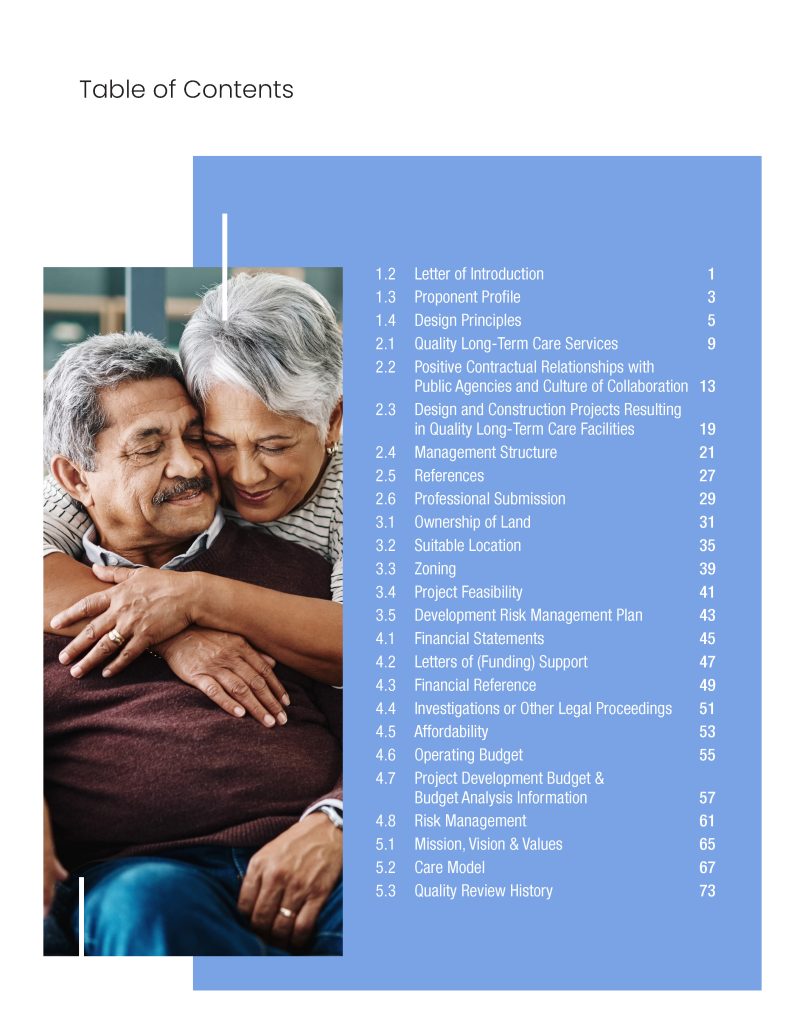How to Write A Persuasive Proposal
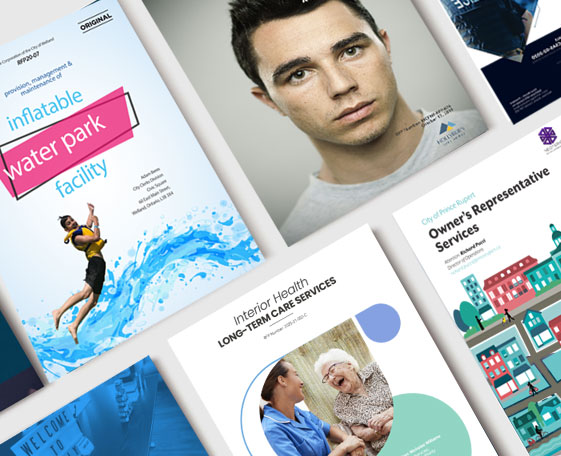
You are in the right place if you want to learn how to write a persuasive proposal that secures new projects and clients.
This post will guide you in writing persuasive proposal content and designing a convincing proposal that will dramatically improve your chances of success. We provide lots of examples and templates so you can put our recommendations into action.
We have written proposals for clients across North America for over a decade. We author four to five bids every month. Through the years, we’ve figured out what works and what doesn’t in the eyes of evaluators.
Everything we’ve learned about writing an effective submission in response to solicited proposals like RFPs and RFQs is described in our 21-Point Proposal Check-up service offering – a service that grades a firm’s proposal against the best practices found in persuasive proposals.
This blog post will describe many high-impact best practices and explain how to implement them in your next proposal, sharing relevant examples and templates. By the end of the article, you will have what you need to dramatically improve the chances of success on your next bid, tender or proposal.
Before we get started, it’s important to clarify one thing: This article will help you write better-solicited proposals, specifically, meaning those you need to craft in response to a formal Request for Proposal (RFP), Request for Qualifications (RFQ), Request for Quote (RFQ) or Request for Information(RFI). If you need help developing a more robust unsolicited or business proposal, look at our How to Write a Business Proposal post.
Ok, now that we’ve got that out of the way, let’s get started.
We’ve organized this guide to address the seven most essential elements of a persuasive proposal, namely:
- A powerful proposal win strategy
- A cover letter that breaks the mold
- An executive summary that leaves nothing to chance
- A table of contents that is transparent and engaging
- Content that is, first and foremost, client-focused
- Content that is solution focused
- Content that communicates on multiple levels and can be skimmed
Let’s go, one by one, starting with how best to create an effective win strategy.
#1) How to Write a Persuasive Proposal – Powerful Win Strategy
The importance of your proposal win strategy cannot be understated. Developing one before you begin the proposal writing process will help guide and structure your efforts. It is essential to dedicate a few hours to collaborating with key internal stakeholders to hammer out your clear, competitive win strategy; this includes defining your value proposition and the key themes you’d like to weave throughout the pages of your proposal. Investing in this effort will help ensure your submission effectively differentiates your firm.
In addition to formulating a bid-specific win strategy, it is always necessary to find a way to build trust as part of this strategy because it lends assurance to clients that you can deliver on your promises.
Here is a simple exercise we like to work through with clients when developing a proposal-win strategy.
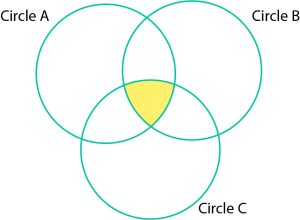
The above Venn diagram’s three partially overlapping circles depict as follows:
Circle A represents your organization’s strengths.
Circle B represents your competitors’ weaknesses – those organizations you believe will likely respond to the RFP.
Circle C represents the most important considerations, or evaluation criteria, of the organization that issued the RFP, RFQ or RFI.
Where the three circles overlap is where you will find your unique value proposition – your win strategy or themes that should be reinforced throughout your submission.
Hopefully, you understand your firm’s strengths (Circle A) as they relate to the services sought by the RFP process. Carefully reading the RFP, combined with some desktop research on the buyer or intelligence gleaned through an existing relationship with the client, should help you develop a shortlist of the buyer’s most important considerations (Circle C).
Understanding your likely competitors’ weaknesses (Circle B) takes some work. But it is well worth the effort.
In summary, an effective proposal win strategy:
- Leverages what sets your firm apart from likely competitors
- Helps to position your firm’s strengths and exploits competitors’ weaknesses
- Establishes trust with the prospective client
- Articulates why the client should pick your firm for this project
- Becomes the unifying theme/key message(s) for the proposal
- Conveys several potential differentiators, including experience, proposed team, customer base, recent successes, approach, processes or technology, pricing, and reputation
If you’d like to learn more about developing a compelling proposal win strategy, please read our post entitled 10 Questions to a Winning Proposal Strategy, where we pose some probing questions to kick off your strategy development.
#2) How to Write a Persuasive Proposal – Cover Letter that Breaks the Mold
Though some RFPs prescribe strict cover letter formats, many can follow whatever structure you’d like. If there is no prescribed format, then be sure your cover letter is professionally formatted (date, contact, title, company name and address, and subject that includes the RFP number and title) and is expertly crafted with the following:
- An introduction to your company
- A clear, high-level description of your proposal’s value proposition, tying it to the prospective client’s stated needs or challenges
- Clearly articulated competitive advantage explaining why your company is better positioned to meet the client’s needs
If you have a graphic designer on your team, incorporate some visuals; for example, you can further enhance your cover letter with call-out boxes featuring testimonials or emphasizing your value proposition.
Finally, ensure the signatory is someone from your company’s executive team – a CEO, CIO, CFO, CTO, or the sales executive responsible for the account.
#3) How to Write a Persuasive Proposal – An Executive Summary that Leaves Nothing to Chance
When writing an executive summary, consider that key decision makers or influencers weighing in on the contract award may not read the entire proposal. Thus, it is critical to effectively summarize every significant part of your proposal in the Executive Summary. One way to do this is by referring to your Table of Contents (TOC) and writing a few sentences on each TOC item. In most cases, this includes your company profile, solution summary, approach and methodology, and proposed team.
Another approach is to structure your executive summary based on the RFP’s stated evaluation criteria. Summarizing your proposal’s salient features, and addressing each evaluation criterion, is an excellent strategy to help differentiate your proposal and ensure evaluators know exactly why they should hire your firm.
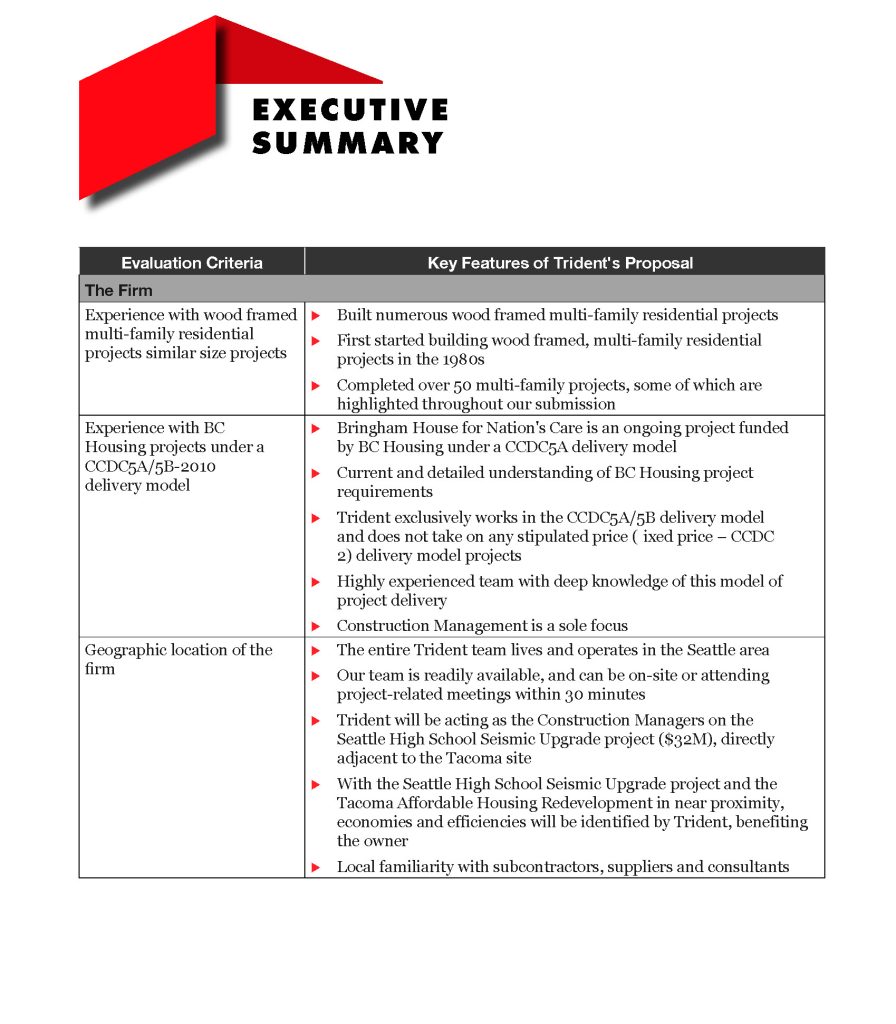
#4) How to Write a Persuasive Proposal – A Transparent and Engaging Table of Contents
The TOC serves as the reader’s reference guide to your proposal. Be sure to generate a TOC that shows at least two or three heading levels. This approach will help the reader navigate your document easily.
You should ensure the TOC headings (which map directly to the document headings) reflect the criteria the prospective client uses to evaluate your proposal. If the document is submitted digitally, we recommend making a dynamic TOC where hyperlinking each line item to the correct place in the document for easy reference by evaluators.
Finally, the TOC is a wonderful location to include some engaging imagery and hopefully make a connection with the evaluators.
Here are two examples of transparent and engaging TOCs.
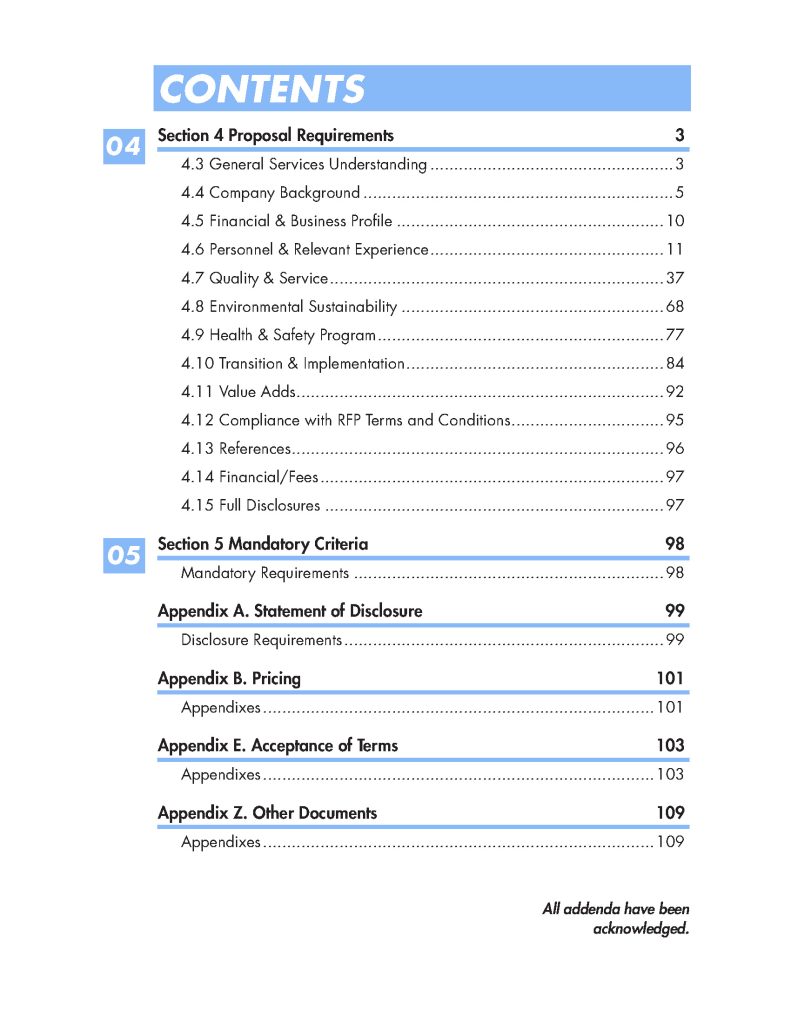
#5) How to Write a Persuasive Proposal – Client-Focused Content
Too often, firms lose track of a proposal’s primary purpose – to propose a specific solution that addresses the technical, non-technical and financial needs of a buyer (prospective client).
Crafting responses to a long list of questions and customizing each to speak to the buyer’s every requirement is much work. As a result, sometimes companies opt for a shortcut, cutting and pasting content from a past submission, investing minimal time and effort tailoring it to the client’s specific scope of work, or stated technical requirements.
Unfortunately, there are no shortcuts to a winning proposal. You need to do the work to get the desired results. Every part of your submission must be crafted to speak to the client’s specific RFP objectives and requirements.
In order to be client-focused, your proposal should explain how you will solve the client’s problems and help them achieve their vision. You must describe how you engage clients or work through challenges in meeting service delivery challenges and budget or schedule constraints. It should also demonstrate how you think and solve problems.
On your next proposal, try using the inside front cover to feature a series of statements explaining how your solution will benefit the client. I know – it’s a tall order. Please don’t get overwhelmed by trying to do everything on every submission but begin thinking in these terms. Craft your proposal to focus on the client versus your organization.
You can determine if a proposal is client focused if it:
- Includes how you propose to solve the client’s stated problem or challenge and clearly explains your solution’s benefits
- Leads with an assessment of the client’s needs and issues, followed by your proposed solution, execution plan, and expected outcomes
- Addresses the client’s foremost question – “what can you do for me?” rather than, “are you more qualified than the others?”
- Connects the features of your service offering with specific benefits the client values
- Identifies ways you can “add value” to the client’s request, thus, differentiating your firm from others
Feature pages like this are a great way to keep your proposal client-focused. This example illustrates the proponent’s passion and commitment for the project and their understanding of the unique challenges that the successful proponent must address.
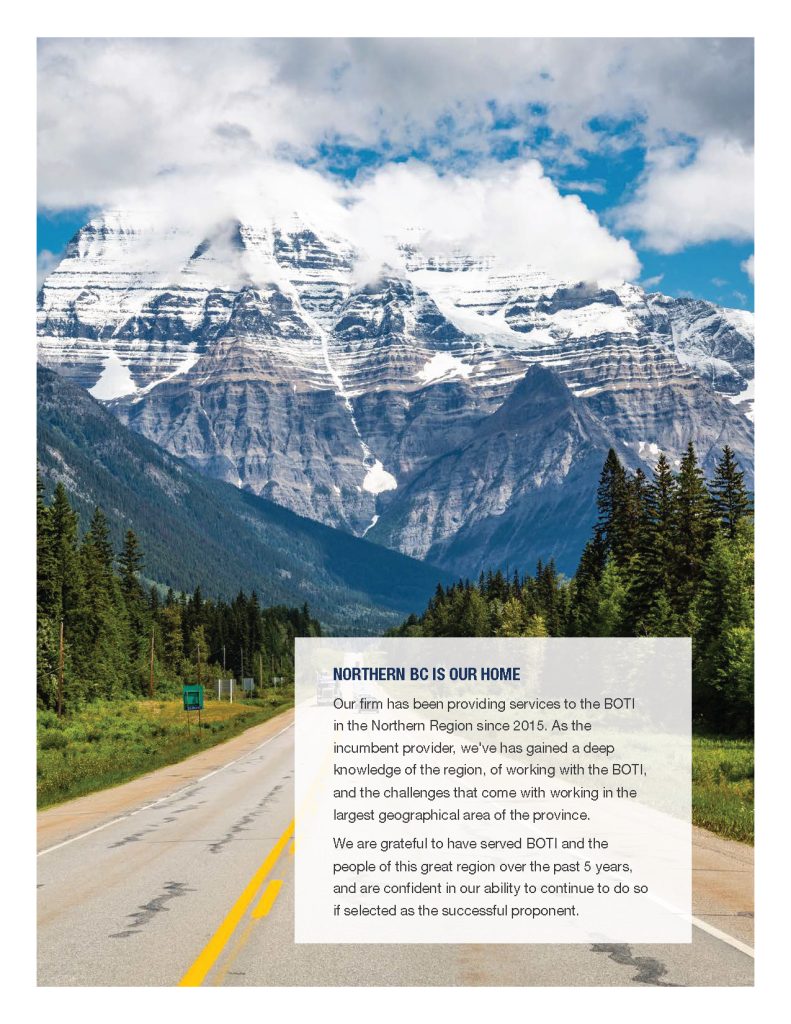
#6) How to Write a Persuasive Proposal – Content that Communicates on Multiple Levels that Easily Skimmed
The structure of your document is critical. Choose headings and sub-headings thoughtfully; they should obviously identify the section’s content. It will enable evaluators to skim a document more effectively.
How you present your content is also essential to your proposal’s success. Be sure to incorporate graphics that reinforce your value and images that help convey your brand and the story you are telling. If you have access to a graphic designer, they can help present data in a more visually compelling manner (i.e., infographic); this can enhance your proposal, ensuring critical information is memorable.
Additionally, we also recommend using call-out boxes judiciously. These might restate key points or relay customer testimonials. Again, they add visual interest and make for a more compelling read.
#7) How to Write a Persuasive Proposal – Professional Design and Layout
As mentioned above, graphical elements are critical to a successful proposal. They add polish and professionalism and play a significant role in effective document design and layout. Together with the strategic use of white space, they can more effectively convey information, enhance storytelling and break up large sections of text into smaller, more easily digested chunks.
In addition, your company’s branding is also essential to your proposal’s professional design and layout. Your logo, fonts, image selection, design elements and template design should all reinforce your brand and not detract from it. Using a graphic designer to create a template is highly recommended. You will use it regularly to ensure a consistent look and feel for all your submissions, so it is worth the investment in design services.
Once you’ve considered these seven elements, you are well-positioned to develop a winning, persuasive proposal.
If you do not have the time or resources to dedicate to the proposal effort, we offer proposal writing services designed to help your company craft compelling bids.
